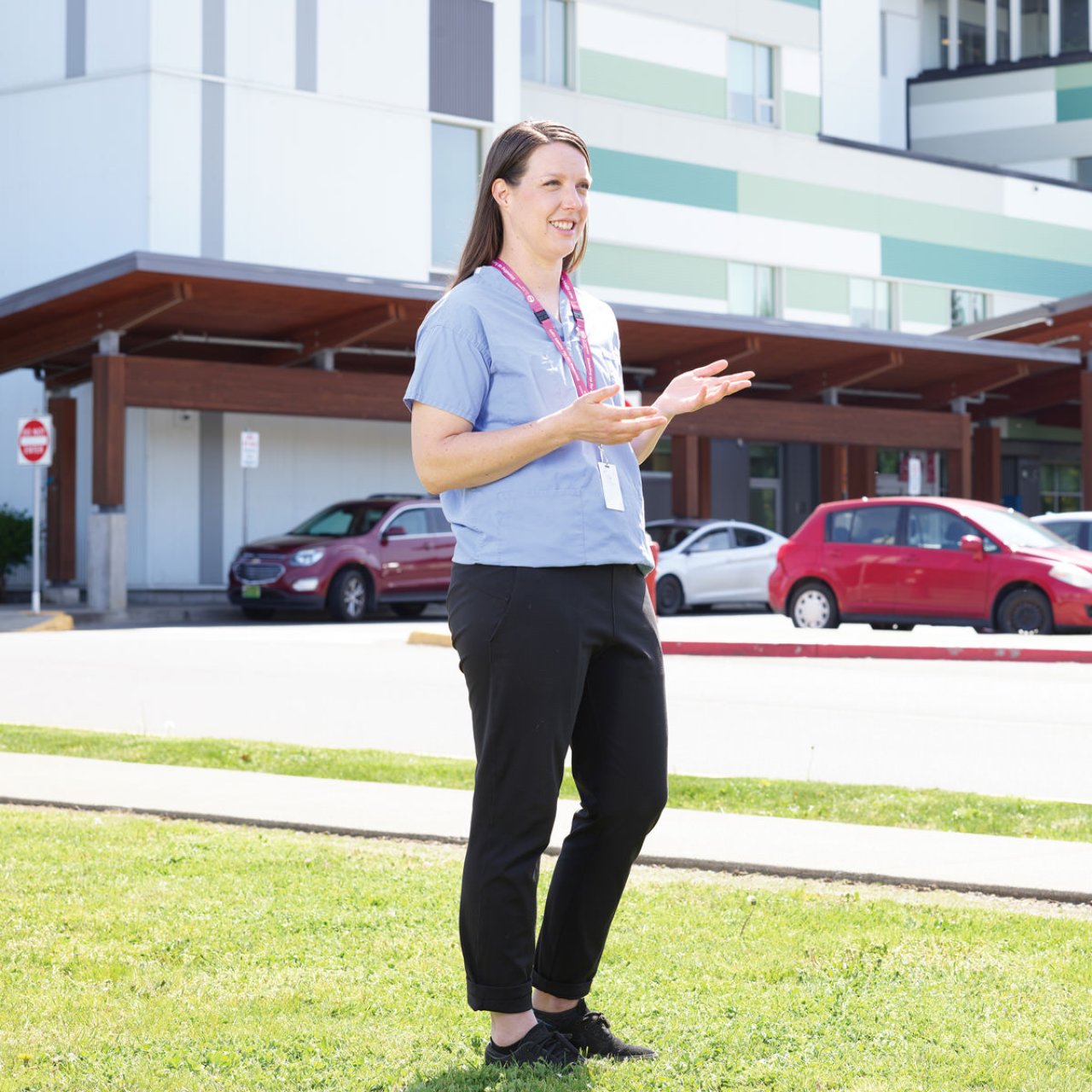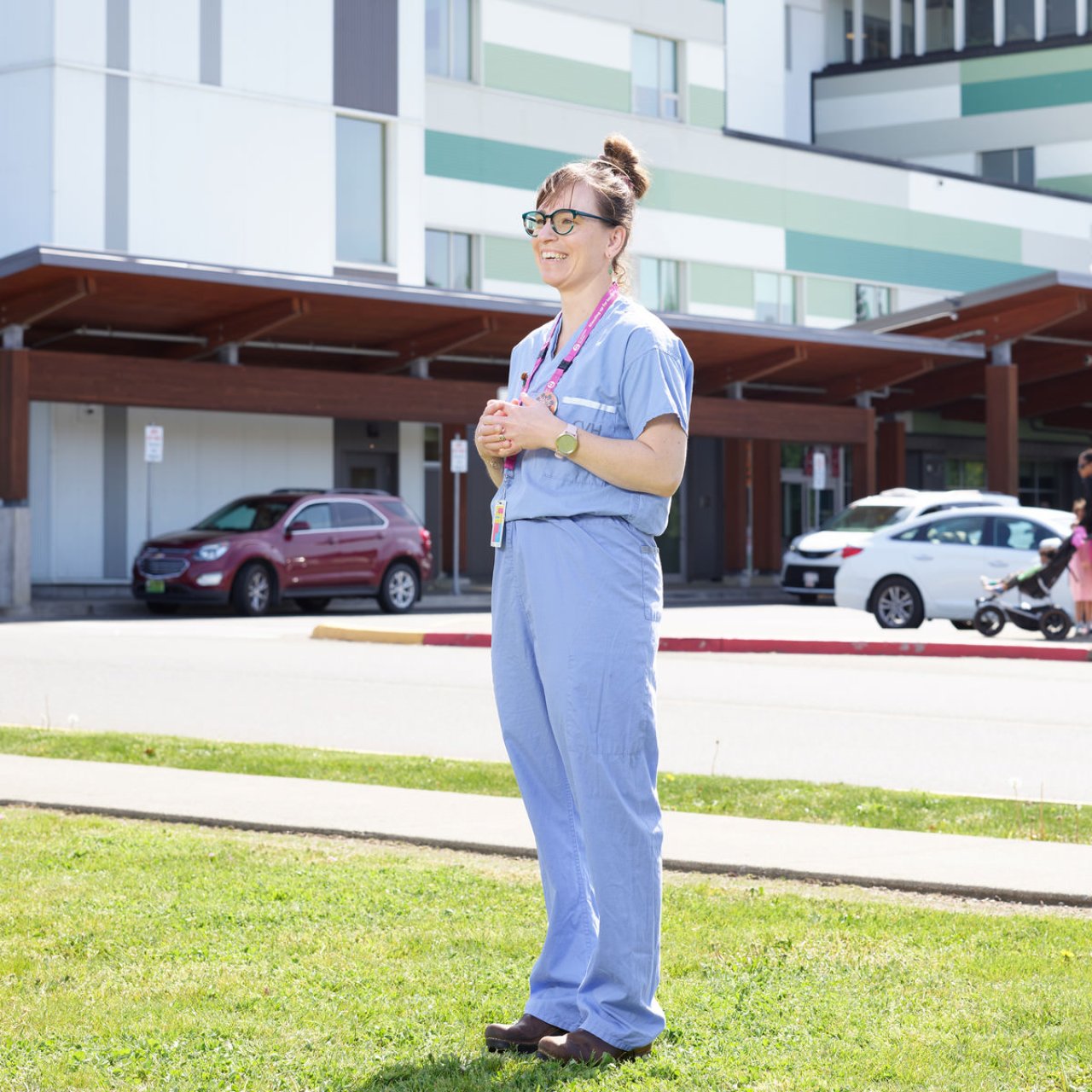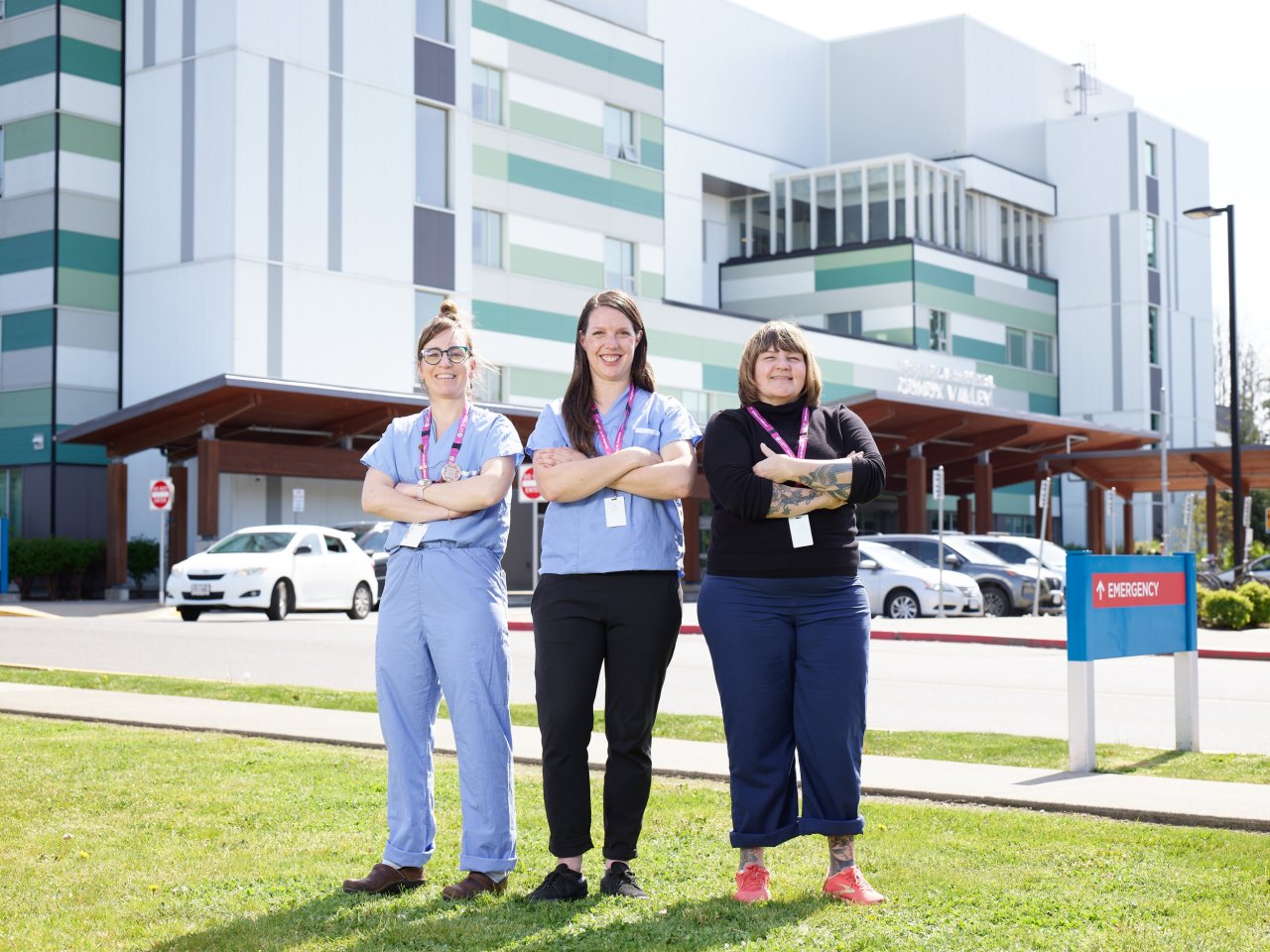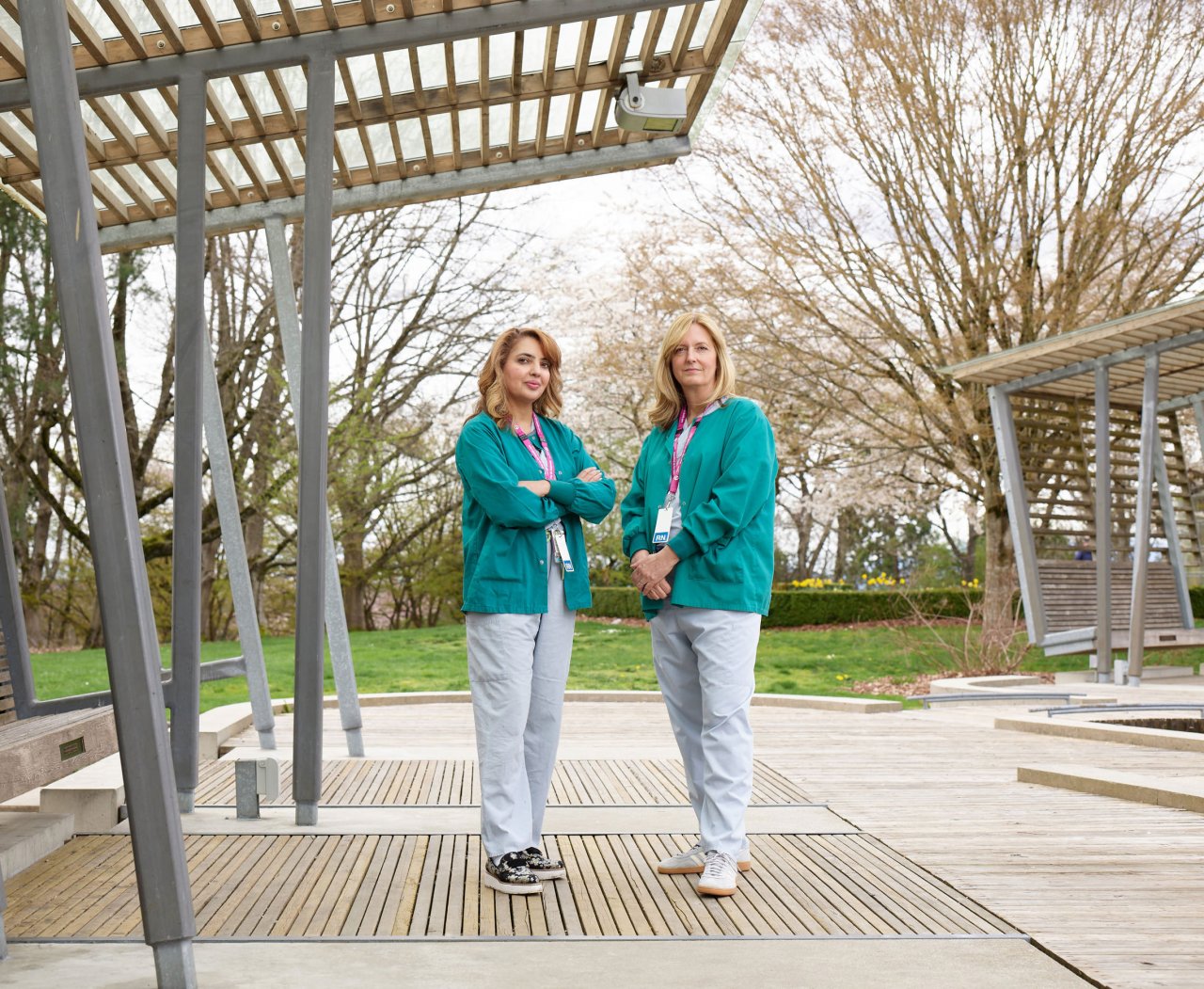BCNU MEMBERS ARE UNITED
Working together for safe and dignified patient care.
At a community hospital, a team of BCNU members are taking action for vulnerable patients – and showing how collective advocacy can drive real change.
A group of BCNU members on Vancouver Island were concerned about a worsening problem in their community hospital’s emergency department.
The number of unattached patients they treated – people who could not be admitted to an appropriate ward in the hospital due to a lack of hospitalists – had been growing for more than a year. Like many community hospitals serving smaller BC towns, the North Island Hospital Comox Valley (CVH) has a small emergency department with limited capacity to house patients needing ongoing care. But last summer, nurses in the ER found themselves struggling with a massive influx of unattached patients.
“These patients are held in the ER until a doctor comes to admit them to the hospital,” says Megan Ramshaw, an ER nurse at CVH. “For lack of a better term, they get stuck in the ER.”
While nurses are no strangers to a busy and complex working environment, those at CVH became concerned about the standard of care for unattached patients.
“Because of the fractured nature of care for these patients, orders may not have been placed the day before,” says Liz Kavouris, also an ER nurse at CVH. “They might not receive their normal medications. They don't get contact precautions flagged on their documentation – you might have somebody who has C-diff or COVID being held in the hallway.”
As the number of unattached patients continued to increase, these BCNU members struggled with how the outcomes for these patients differed from those properly admitted to the hospital under a responsible physician.
“This felt so morally distressing because these patients aren’t getting universal health care,” says ER nurse Devon Welsh. “You see an elderly person whom you’ve treated every day that week lying on a stretcher under the bright hallway lights. Then you see another person whose family doctor admits them to a proper room receive comprehensive medical care. It’s a matter of people’s rights.”
As the problem continued to build, the nurses felt compelled to act. They began having conversations with each other and bringing their concerns to management about what could be done to better care for these patients. But they found those first efforts frustrating.
“After a really horrendous summer last year, it was clear that there was no plan,” says Ramshaw. “We had no space to work out of, we ran out of stretchers, we didn’t always have a spot available for the next person.”
“It became very obvious that someone needed to do something,” Welsh adds. “And that someone can be us.”
We have been trying everything we can as a collective to make this situation more equitable and safer."
— Megan Ramshaw


They consulted their local BCNU steward, Shawna Atkinson, who encouraged them to start pressing on all of the levers available to them as unionized nurses. Each member tapped into their unique skill set, and the group started tackling the problem from multiple angles.
Kavouris found that, while managers were interested in what they had to say, a lack of information on these unattached patients meant that they didn’t understand the full scope of the problem. Using her statistics acumen, she started gathering data to support their advocacy efforts and explain how unattached patients were affecting hospital outcomes and costs.
“As emergency patients who haven’t been admitted, unattached patients don’t exist on the hospital census,” she explains. “We prepared numbers showing longer hospital stays for these patients and an exponential increase in our budget.”
Welsh worked with the hospital’s Joint Occupational Health and Safety committee to document concerns for nurses’ safety and even consulted the local fire department when overcrowding in the ER was at its worst.
Ramshaw focused on advocating from a nursing practice standpoint, drafting a joint letter to the employer using the Nurses’ Bargaining Association professional responsibility process to help solve nursing practice issues collaboratively at the local level. Once enough of their co-workers had signed the letter, they presented it to the employer, demanding it take the problem seriously. Additionally, along with their colleagues, the group filed dozens of submissions through the Patient Safety and Learning System – the employer’s web-based tool for reporting patient safety incidents and hazards.
Following their coordinated efforts, the three nurses say that they are starting to see more clinical leadership from management focused on tackling the problem. They now meet regularly with management, professional practice directors and senior hospital administrators to discuss solutions. They have also started meeting with local physicians to collaborate.
It became very obvious that someone needed to do something. And that someone can be us."
— Devon Welsh


The unattached patients problem is not yet solved at CVH – a downstream effect of the shortage of physicians in BC. Indeed, many hospitals and health-care settings across the province are likely experiencing their own version of the issue. But, thanks to these BCNU members’ united efforts, their local hospital and health authority are paying attention.
“We needed to work as a team,” says Kavouris. “I don't think being separate or fighting each other would have got us anywhere.”
These nurses also outline how the power and support that BCNU provided helped them have the courage to push the issue and advocate for their colleagues and patients.
“When you have the union behind you, your voice is not just your own,” says Kavouris. “The whole team has your back. It’s very reassuring.”
By uniting to pursue a shared objective, these three nurses made sure their voices – and the voices of their patients – were heard.
“This is our community,’ says Ramshaw. “Any one of our family members or friends could be part of this unattached cohort. I want to be able to look them in the eye and tell them that we have been trying everything we can as a collective to make this situation better, more equitable and safer.”



